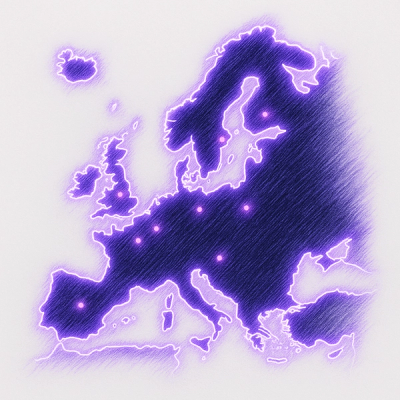Fauxmium — The Infinite Generated Web
Everything you see inside the Fauxmium browser is generated on the fly. It is not real.
This project is a proof‑of‑concept showing how generative AI can create an effectively infinite “web” as you browse. Fauxmium launches Chrome, intercepts navigations and image requests, and routes them to a local proxy that asks AI models to generate HTML and images for the requested URL.
Not affiliated with any employer or product.
Quick Start
Run with default settings (Google/Gemini for text and images):
npx fauxmium
Recommended: open DevTools
npx fauxmium --devtools
Requirements
- Node.js
- API keys for the providers you intend to use (see Environment Variables below)
Environment Variables
Place in a .env file at project root or export via your shell:
- GEMINI_API_KEY or GOOGLE_API_KEY — for Google text and images
- OPENAI_API_KEY — for OpenAI text
- ANTHROPIC_API_KEY — for Anthropic text
- GROQ_API_KEY — for Groq text
The CLI automatically resolves keys from the environment. You can override with flags (--api-key, --image-api-key).
Example .env:
GEMINI_API_KEY=your_gemini_key
OPENAI_API_KEY=your_openai_key
ANTHROPIC_API_KEY=your_anthropic_key
GROQ_API_KEY=your_groq_key
CLI Usage
Default command (no subcommand) uses Google/Gemini text and Google/Gemini images.
npx fauxmium [options]
Provider commands for text:
npx fauxmium gemini [options]
npx fauxmium google [options] # alias of gemini
npx fauxmium openai [options]
npx fauxmium anthropic [options]
npx fauxmium groq [options]
Common options:
- --hostname, -H Default: 127.0.0.1
- --port, -p Default: 3001
- --devtools Open DevTools on launch (default: false)
- --model, -m Text model (provider-specific defaults/choices)
- --api-key Explicit API key for text provider (overrides env)
- --image-provider Image provider (currently gemini/google only)
- --image-model, -i Image model (e.g., gemini-2.5-flash-image-preview)
- --image-api-key Explicit API key for image provider (overrides env)
Image configuration:
- Images are currently supported only via Google/Gemini.
- You can configure image settings via:
- the same provider command’s nested
images subcommand, or
- the options on the main command.
Examples:
npx fauxmium
npx fauxmium openai --api-key $OPENAI_API_KEY --image-api-key $GEMINI_API_KEY
npx fauxmium -p 8080 -H 127.0.0.1 --devtools
npx fauxmium gemini -m gemini-2.5-flash-lite --image-model gemini-2.5-flash-image-preview
For full help and the list of default models per provider:
npx fauxmium --help
How It Works
High-level flow:
- Fauxmium launches headful Chrome via Puppeteer.
- It installs a bundled MV3 extension at runtime and configures it with the proxy host/port.
- All page navigations and image requests are intercepted.
- Intercepted requests are redirected to a local proxy server that asks AI models to generate HTML or images based on the requested URL.
- The browser renders the returned content.
Components:
- Browser Controller (
browser.js)
- Headful Chrome launch, runtime extension install, configuration via CDP Extensions.setStorageItems.
- Intercepts requests per page.
- Shows a warning page on startup.
- Proxy Server (
server/index.js)
- Endpoints:
- GET /html — Streams AI‑generated HTML (extracted from ```html fences).
- GET /image — Returns AI‑generated image bytes (PNG/JPEG/etc.) or a 1×1 transparent PNG on error.
- GET /cost — In‑memory session usage/cost summary (used by the extension).
- Loads model pricing from Helicone for cost tracking (
loadCosts).
- Text/Image Generation (
/lib)
lib/aiAdapter.js — Text streaming via Vercel AI SDK across providers (Google/OpenAI/Anthropic/Groq). Images via @google/genai (Google only).lib/costCalculator.js — Tracks token usage and cost per request/session.lib/processChunks.js — Applies processors and manages stream flush with an END sentinel.lib/streamCodeBlocks.js — Extracts ```html fenced content from the text stream.lib/prompts.js — Loads and interpolates prompts/html.txt and prompts/image.txt.
- Chrome Extension (
extension/)
- Popup fetches
/cost and displays total and per‑request costs.
Prompts:
prompts/html.txtprompts/image.txt
These are read from disk on each request, so you can tweak prompts without restarting.
Constraints and Behavior
- Subresources:
- Only navigation (page) and image requests are forwarded to the proxy.
- Other subresources (e.g., external CSS/JS) are blocked.
- Generate inline CSS and JS within the HTML.
- State:
- Navigations are stateless; there is no cross‑page memory at present.
- Images:
- Only Google/Gemini image generation is supported at this time.
- Costs and usage:
- Pricing is fetched from Helicone per model; unknown models default to 0.
- Some providers may not report usage; such requests are counted as 0 cost.
- Image generation costs are not currently tracked.
- Headers:
- Referer is stripped (set to empty) for proxy‑bound requests as a temporary workaround.
Roadmap (abridged)
- Improve image prompts with width/height/description parsed from image URLs.
- Optional session memory to carry context across navigations.
- Add additional image providers behind a common interface.
- Add
/reset-costs endpoint and refresh/reset in the extension popup.
- Better error handling, timeouts, structured logs, and tests.
License
Apache‑2.0 — see LICENCE.
Contributing
Issues and PRs are welcome. Please describe changes clearly and include repro steps where relevant.



